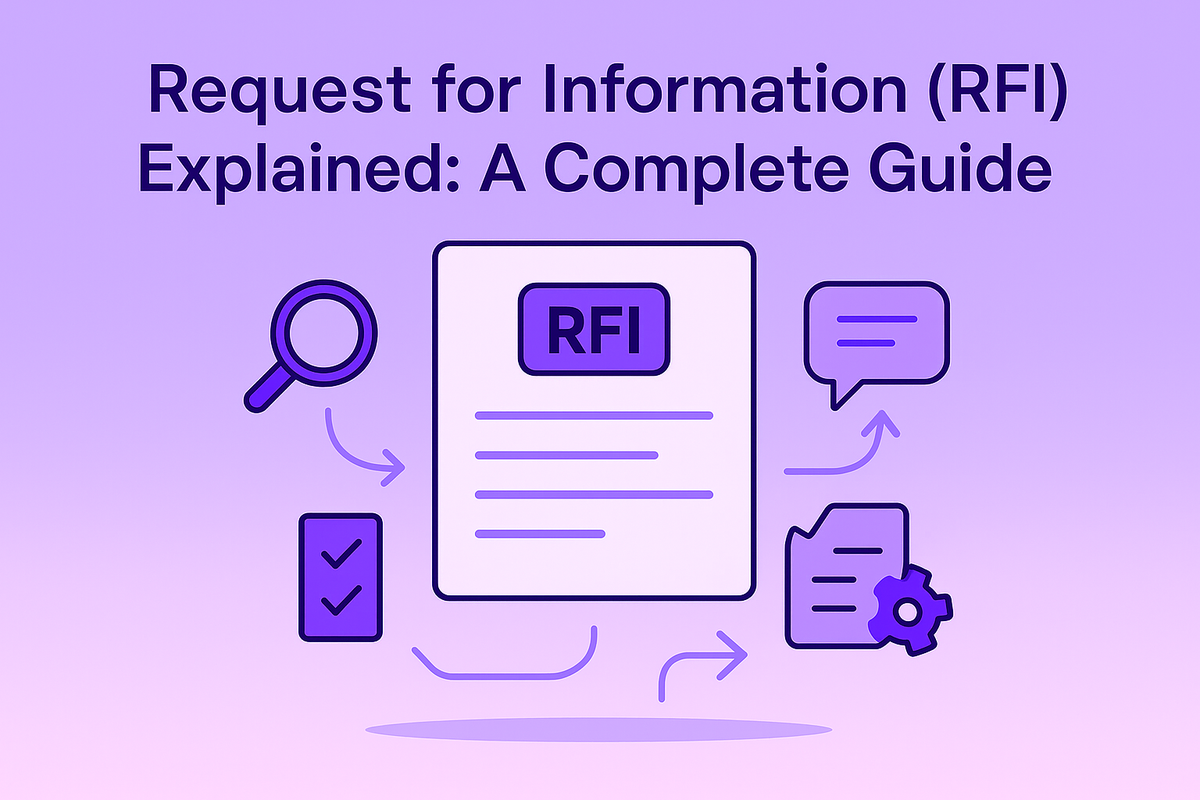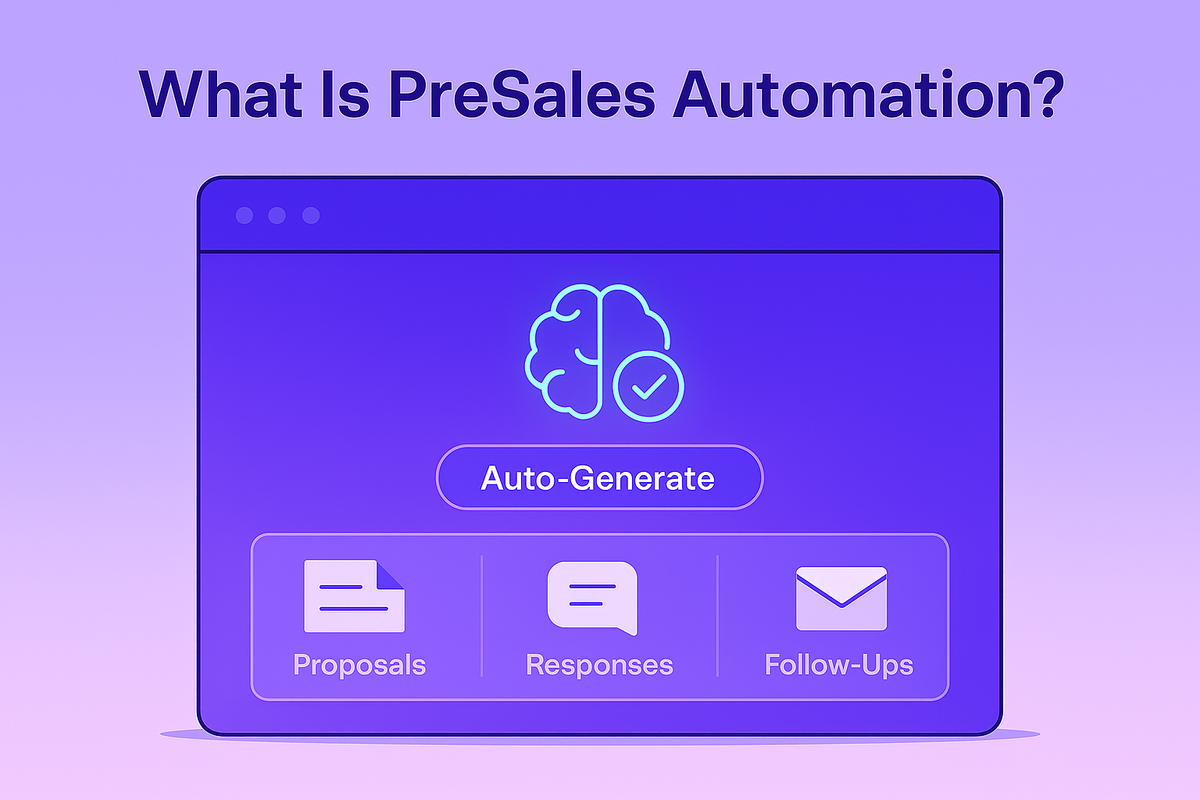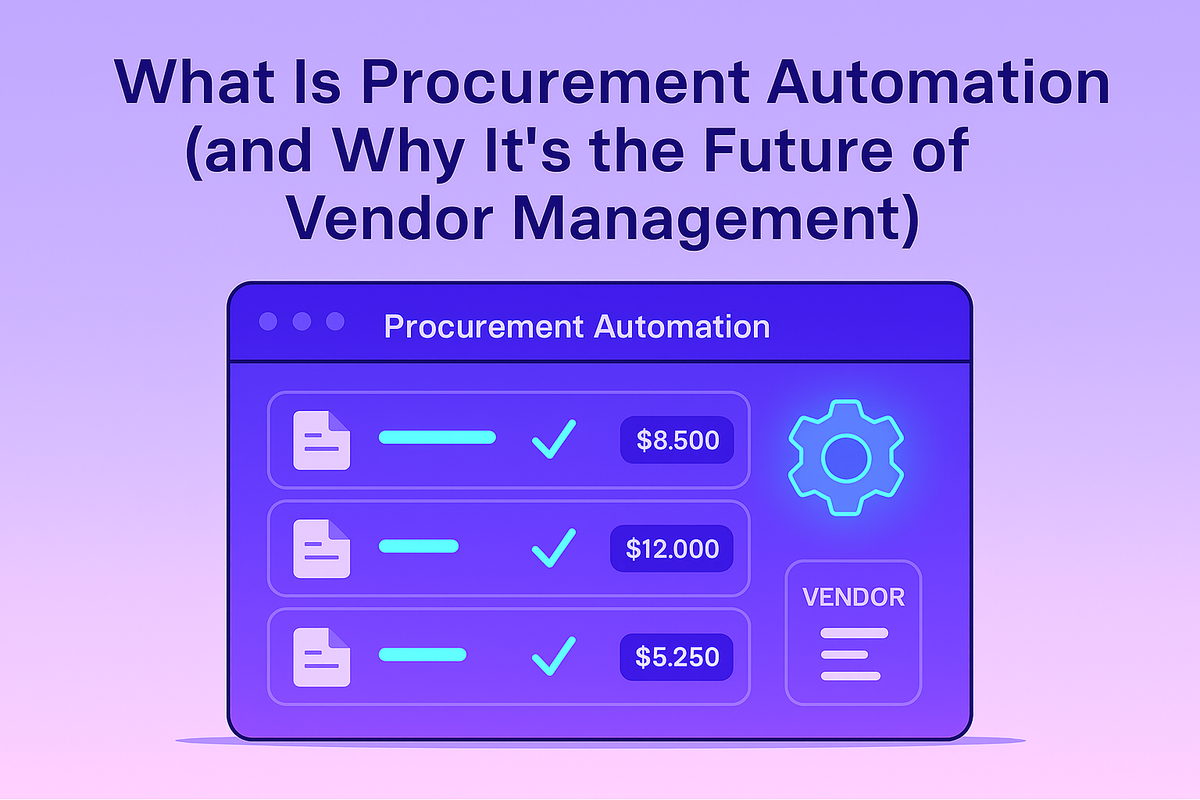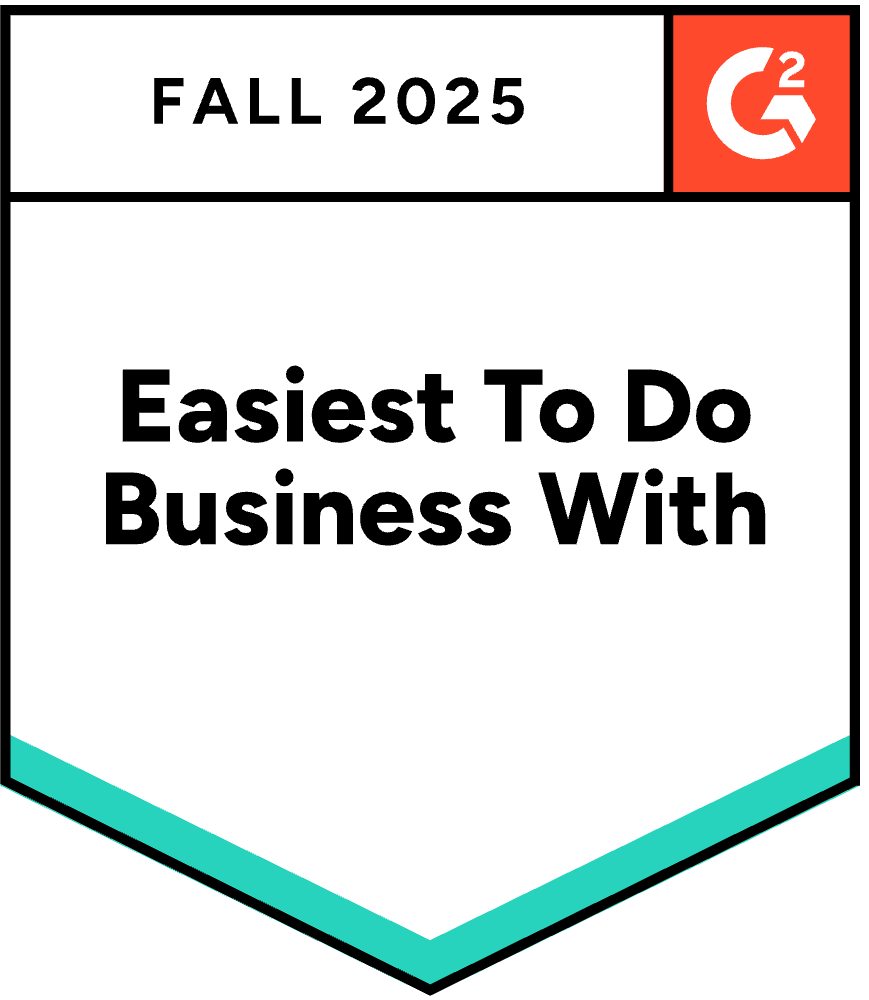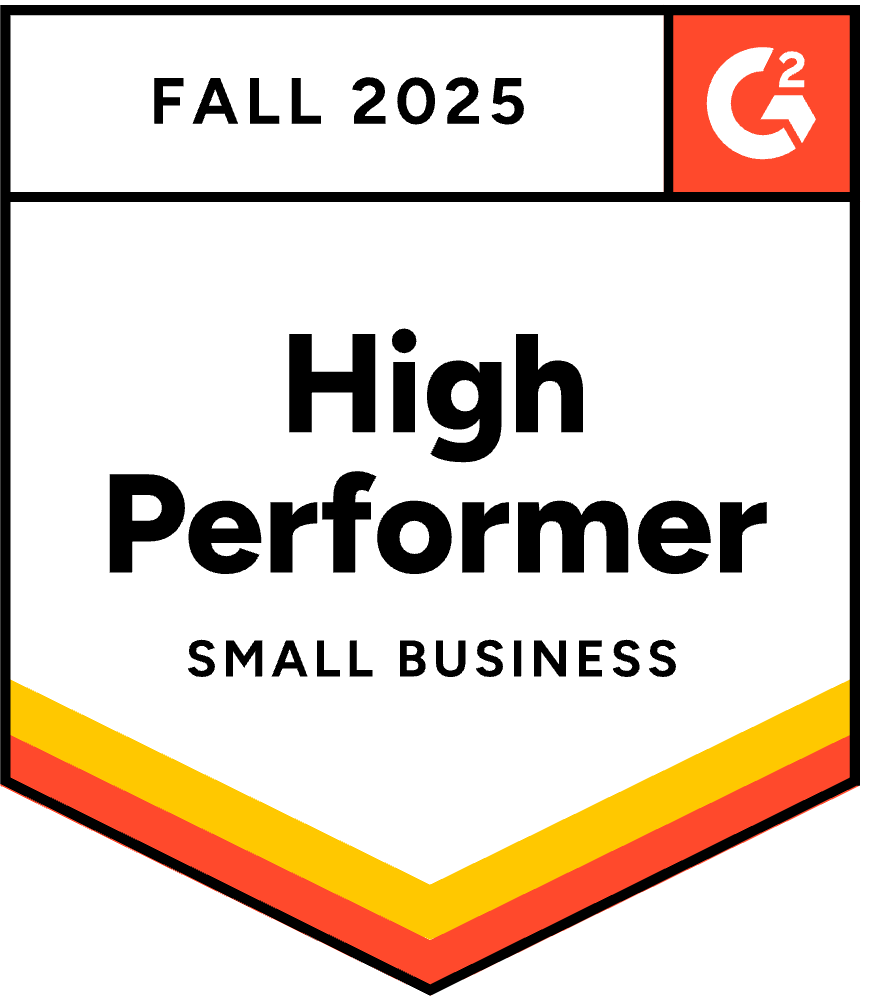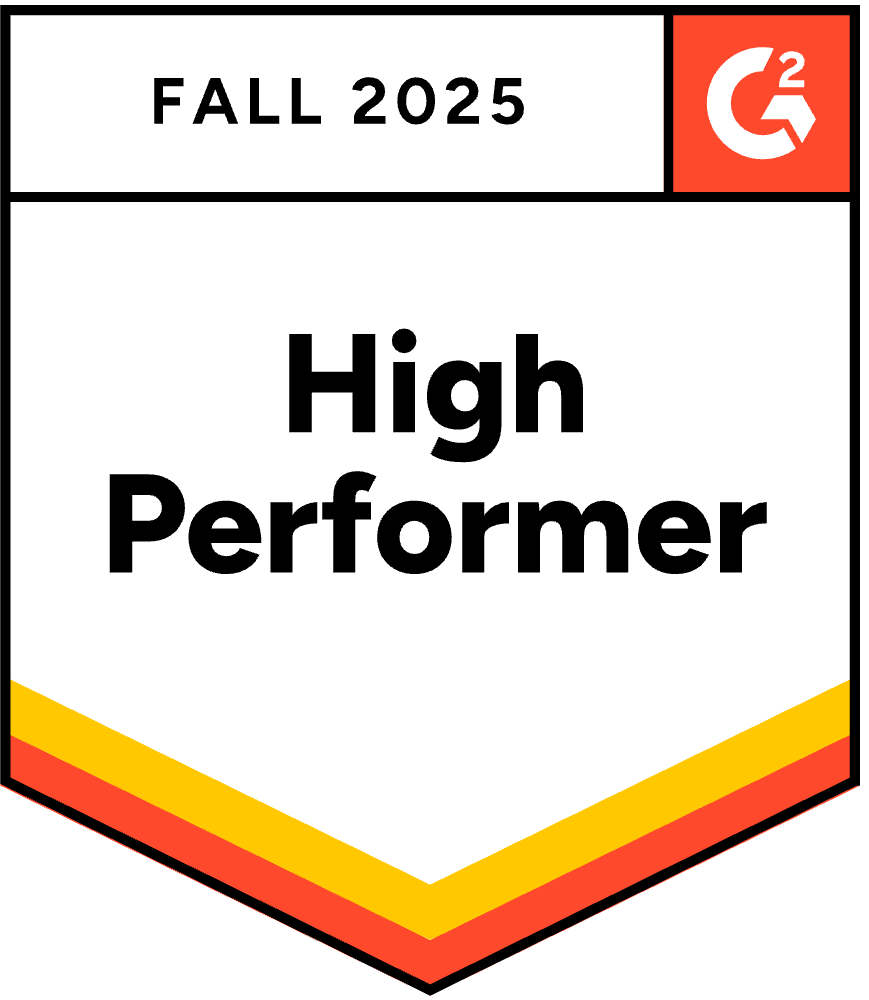Top 7 RFP Response Tools to Automate Proposals
November 12, 2025
By
Evie Secilmis

How much is your current RFP process costing you? When you factor in the hours your sales team, subject matter experts, and leadership sink into each proposal, the number is often staggering. That time could be spent building client relationships or pursuing new opportunities. The good news is that this is a solvable problem. The right RFP response tools deliver a powerful return on investment by dramatically reducing the time it takes to create a winning proposal. By automating repetitive tasks and centralizing your knowledge, these platforms free your team to handle more opportunities and improve your win rate. This article will break down how to calculate that ROI and choose a solution that fits your budget and your business goals.
Key Takeaways
- Solve Your Real Problems First: Before you start looking at software, map out your current proposal workflow to pinpoint the exact bottlenecks. The right tool is the one that directly addresses your team's biggest frustrations, whether it's finding information, managing deadlines, or ensuring consistency.
- Prioritize a Central Knowledge Base with AI: The core of any effective RFP tool is a single source of truth for your content, powered by smart automation. This combination saves countless hours by suggesting accurate answers, freeing your team to focus on strategic customization instead of administrative work.
- Your Strategy Drives the Software's Success: An RFP tool is not a "set it and forget it" solution. The greatest return on investment comes from continuously building your knowledge base, tracking performance metrics, and refining your workflows to turn your proposal process into a competitive advantage.
What Are RFP Response Tools, Anyway?
Let's start with the basics. RFP response tools are specialized software designed to help your team manage and automate the process of responding to Requests for Proposal (RFPs), RFIs, Security Questionnaires, and other complex business documents. Think of it as a central command center for every proposal you create. Instead of having your team hunt through old documents, shared drives, and endless email threads for the right answers, these platforms organize your best content, streamline collaboration, and help you generate high-quality drafts in a fraction of the time. They turn a chaotic, manual task into a smooth, strategic part of your sales cycle, giving you a serious competitive edge.
From Spreadsheets to Software: The RFP Evolution
If you've ever managed an RFP response using a spreadsheet, you know the pain. Juggling versions, tracking down answers from different departments, and copy-pasting from old proposals is a recipe for errors and burnout. As your business scales and the number of proposals grows, this manual approach quickly becomes unsustainable. RFP software is the solution to this complexity. It provides a structured, organized environment that replaces scattered files and chaotic email threads with a single source of truth for your proposal content. This evolution allows your team to stop wrestling with logistics and tedious administrative work and start focusing on what really matters: crafting a compelling, persuasive proposal that wins the deal.
How RFP Tools Change the Game for Your Proposals
The biggest impact of RFP software is the massive amount of time it gives back to your team. By automating repetitive tasks, these tools dramatically speed up the response process, freeing your experts to focus on strategy instead of administration. Modern platforms use AI to suggest the best answers from a central content library, making it easy to find approved, up-to-date information in seconds. They also simplify collaboration by letting you assign questions to subject matter experts and track progress in one place, eliminating confusion. This means you can not only respond faster but also improve the quality and consistency of every proposal you send, which directly impacts your win rates.
What to Look For in RFP Software
Choosing the right RFP software feels a lot like adding a new team member. You want something that fits your workflow, makes everyone's job easier, and ultimately helps you win more deals. While features can vary, a few core capabilities are non-negotiable for any team serious about improving its proposal process. As you evaluate your options, look for a tool that doesn't just store information but actively helps you use it. The goal is to move from frantic, last-minute document assembly to a calm, strategic response system that consistently produces high-quality proposals.
A Central Content Library
Think of this as your team's single source of truth. A central content library stores and organizes all your approved response content—from company boilerplate and security details to product descriptions and case studies. Instead of hunting through old proposals or pinging subject matter experts for the same answers repeatedly, your team can pull from a pre-vetted, up-to-date repository. This not only saves an incredible amount of time but also ensures consistency and accuracy across every proposal you send. The best platforms, like Iris, make it simple to tag, search, and manage this information, so finding the perfect answer is always just a few clicks away.
AI-Powered Automation
This is where modern RFP tools really shine. AI-powered automation handles the heavy lifting, freeing your team to focus on strategy and customization. An intelligent system can read an incoming RFP, automatically identify questions, and suggest the best answers from your content library. This can generate a complete first draft in minutes, not days. AI also helps by flagging questions that require a new or updated response, ensuring your content never becomes stale. By automating repetitive tasks, you reduce the risk of human error and give your team the bandwidth to tailor each proposal to the specific client’s needs, which is a key factor in improving win rates.
Team Collaboration and Workflows
Responding to an RFP is rarely a solo effort. You need input from sales, legal, product, and security, and managing that process can get messy. Look for software with built-in collaboration and workflow tools that streamline teamwork. Features like assignments, notifications, and approval chains ensure everyone knows their role and deadlines are met. The right platform allows you to bring experts into the process seamlessly, letting them contribute their knowledge directly within the document. This eliminates the version control nightmare of emailing Word docs back and forth and creates a clear, auditable trail of who did what, and when.
Analytics and Performance Tracking
How do you know if your proposals are actually effective? Good RFP software provides the data to answer that question. Analytics and performance tracking features give you insight into your entire response process. You can see which content is used most often, how long it takes your team to complete proposals, and, most importantly, your win/loss rates. Over time, this data helps you identify what a winning proposal looks like. You can refine your best content, pinpoint bottlenecks in your workflow, and make data-driven decisions to improve your sales strategy.
Security and Compliance
You’re handling sensitive company and client information in your proposals, so security is paramount. Your RFP software must have robust security measures to protect your data. Look for platforms with certifications like SOC 2 and GDPR compliance, which demonstrate a commitment to enterprise-grade security. Features like role-based access controls ensure that team members can only see the information relevant to their jobs. When you’re entrusting a platform with your most valuable content, you need the peace of mind that comes from knowing it’s protected by the highest security standards.
Seamless Integrations
Your RFP tool shouldn't be an island. To be truly effective, it needs to connect with the other systems your team relies on every day. Look for seamless integrations with your CRM (like Salesforce), communication platforms (like Slack and Teams), and cloud storage (like Google Drive and SharePoint). When your RFP software works in harmony with your existing tech stack, it creates a more efficient workflow. For example, an integration with your CRM can automatically pull client data into a proposal, saving time and reducing manual entry errors. This connectivity ensures information flows freely, keeping everyone aligned and productive.
A Head-to-Head Look at Top RFP Tools
Choosing the right RFP software can feel like a big decision, but it doesn’t have to be complicated. The market is full of great options, each with its own strengths. The best tool for you really depends on your team’s size, the complexity of your proposals, and the specific features you need to get work done. To help you get a clearer picture, I’ve broken down some of the top contenders in the space. We’ll look at what makes each platform unique, from AI-powered content management to deep collaboration features. This isn't about finding a single "best" tool, but about finding the one that fits your workflow like a glove and helps your team win more deals without the late-night scramble.
HeyIris.ai
HeyIris.ai is designed to be a complete AI deal desk, streamlining how you respond to not just RFPs, but also RFIs, SOWs, and security questionnaires. Its real strength lies in its proactive approach to content management. The platform connects to your existing systems and automatically flags outdated information, ensuring your responses are always accurate and current. This focus on maintaining a healthy knowledge base helps teams generate high-quality first drafts in a fraction of the time. For businesses looking to improve both their deal volume and win rates, Iris’s features offer a powerful way to build confidence and consistency into the proposal process.
Loopio
Loopio is a popular choice that uses AI to help teams manage their responses to RFPs and security questionnaires. The platform is well-regarded for its user-friendly interface and strong collaboration features, making it easier for subject matter experts to contribute content. Its core function is to centralize your company’s knowledge, making it simple to find the best answers for any proposal. According to their site, Loopio’s software is built to make the response process faster and more successful, which is a great fit for teams looking to organize their content and work together more effectively on complex documents.
RFPIO
RFPIO is a robust and comprehensive platform often favored by larger organizations that handle a high volume of complex proposals. It’s known for its powerful project management capabilities, allowing teams to manage workflows, assign tasks, and track progress all in one place. The software has a strong import and export engine that can handle a wide variety of formats, which is a huge time-saver. RFPIO’s AI-powered recommendation engine helps users quickly find the most relevant content from their library, making it a solid choice for enterprises that need a scalable, all-in-one response management solution.
Responsive.io
Responsive.io positions itself as a strategic response management platform, using AI to help businesses handle everything from RFPs and RFIs to DDQs and security questionnaires. The platform emphasizes speed and intelligence, aiming to help sales teams not only respond faster but also with more accurate and compelling content. As Responsive.io highlights, the goal is to help companies win more deals by making the entire response process more efficient. It’s a strong contender for teams that want to leverage AI to gain a competitive edge in their proposals and treat response management as a key business function.
RFP360
RFP360 offers a unique perspective by serving both sides of the procurement process: those issuing RFPs and those responding to them. This dual focus gives them a deep understanding of what makes a proposal successful. For response teams, the platform provides tools for knowledge management, collaboration, and automation to streamline the creation of proposals. Their experience with the issuer side means their software is often designed with the end reader in mind. This makes RFP360 an interesting option for businesses that want a tool built on a holistic understanding of the entire RFP lifecycle.
Qvidian
As one of the more established players in the market, Qvidian is a trusted name, particularly among enterprise-level companies. Now part of Upland Software, it offers powerful content automation and management features designed for large, often global, teams. Qvidian excels in environments where compliance and brand consistency are paramount, providing tight control over content and workflows. It’s a go-to for organizations in highly regulated industries that need a reliable system for managing vast libraries of approved content. For these businesses, Qvidian’s enterprise-grade tools provide a secure and structured approach to proposal management.
XaitPorter
XaitPorter is a specialized tool that shines when it comes to creating complex, high-stakes documents like bids, proposals, and reports. It’s particularly popular in industries like energy, engineering, and government contracting, where documents are often massive and involve many contributors. The platform’s strength is in co-authoring and document automation, allowing teams to work on the same document simultaneously without worrying about version control or formatting issues. For teams that need to produce polished, professional, and lengthy documents under tight deadlines, XaitPorter offers a structured and collaborative solution.
How RFP Software is Priced
Alright, let's talk about money. When you're shopping for RFP software, you'll find that pricing isn't always one-size-fits-all. Most tools use a few common models, and understanding them will help you find a solution that fits your budget without any surprise bills down the road. Think of it like this: you wouldn't buy a car without knowing the MPG and maintenance costs, right? The same logic applies here. Knowing how you'll be charged helps you calculate the long-term value and find the perfect fit for your team's workflow and financial plans.
Subscription-Based Pricing
This is the most common model you'll encounter. Most RFP software operates on a subscription basis, where you pay a recurring fee—usually monthly or annually—for access to the platform. It’s predictable, which is great for budgeting. Often, you'll see different pricing tiers. A basic tier might be perfect for a small team just getting started, while higher tiers will offer more advanced features, more user seats, and premium support for larger organizations. This structure allows the software to grow with you. As your team expands or your needs become more complex, you can simply move up to a plan that offers more capabilities.
Per-User Pricing
Some platforms keep things simple by charging based on the number of people on your team who need access. This is often called per-user or per-seat pricing. If you have a small, dedicated proposal team, this model can be very cost-effective. You only pay for the exact number of users you need. The potential catch? Costs can climb quickly as your team grows. If you plan on bringing in subject matter experts from other departments to collaborate on RFPs, a per-user model might become more expensive than a tiered subscription that includes more users from the start.
Usage-Based Models
A less common but still relevant option is usage-based pricing. With this model, your bill is tied directly to how much you use the software. This could be based on the number of proposals you create, the volume of responses you generate, or another key metric. This approach offers a lot of flexibility, especially for businesses with fluctuating proposal volumes. If you have a slow quarter, you pay less. If things pick up, you pay more. It’s a true pay-as-you-go system, which can be ideal for companies that don't have a steady stream of RFPs year-round.
What Else Might You Pay For?
The sticker price isn't always the final price. Beyond the core subscription or user fees, there are other potential costs to keep on your radar. Some companies charge extra for implementation and onboarding, which involves getting the system set up and your team trained. You might also find that critical integrations with your CRM or other business tools come at an additional cost. Always ask about fees for premium support, advanced training sessions, or access to new, high-value features. Getting a clear picture of the total cost of ownership upfront will ensure you find a partner, not just a vendor.
How to Choose the Right RFP Software
Picking the right RFP software can feel like a huge decision, and it is. This tool will become the central hub for one of your most critical sales activities. But don't get overwhelmed by endless feature lists. The best choice isn't always the one with the most bells and whistles; it's the one that fits your team's unique workflow like a glove.
Think of it less like buying a piece of software and more like hiring a new team member. You need to know it can handle the job, get along with your existing systems, and provide real value from day one. To find that perfect fit, you need a clear evaluation plan. By focusing on a few key areas—your team’s actual needs, technical compatibility, support, security, and return on investment—you can move past the marketing buzz and select a platform that will genuinely make your proposal process faster, smarter, and more successful. Let's walk through how to do just that.
Assess Your Team's Needs
Before you even book your first demo, take a step back and look inward. What are the biggest headaches in your current RFP process? Is your team spending hours hunting for the right answers in old documents? Are you struggling to collaborate effectively under tight deadlines? When you’re choosing RFP software, you need to think about its features, how much it costs, and how easy it will be for your team to actually use it. Start by mapping out your current workflow and pinpointing the bottlenecks. Talk to your proposal managers, sales reps, and subject matter experts to understand their daily frustrations. This groundwork will help you create a checklist of must-have features, ensuring you choose a tool that solves your real-world problems, not just the ones a sales page tells you that you have.
Check for Technical Fit and Integrations
Your RFP tool shouldn't live on an island. To get the most out of it, the software needs to connect with the other tools you rely on every day. A platform that integrates with your CRM, like Salesforce, or your communication channels, like Slack and Microsoft Teams, creates a much more efficient workflow. This prevents the constant, frustrating task of toggling between tabs and manually transferring information. Beyond basic connectivity, look for a tool with strong analytics. Good software can show you how well your proposals are performing, giving you the data you need to refine your content and strategy. The goal is to find a solution that fits neatly into your existing tech stack and gives you the insights to improve your deal volume and win rates.
Look for Great Implementation and Support
A powerful tool is only as good as your team's ability to use it. That's why implementation and ongoing support are just as important as the software's features. When you're evaluating options, ask detailed questions about the onboarding process. Will they help you migrate your existing content? Do they offer live training for your team? What does customer support look like after you're up and running? A vendor that invests in your success will provide comprehensive resources and a responsive support team to help you clear any hurdles. This partnership is crucial for smooth adoption and for making sure you get the full value out of your investment over the long term.
Don't Forget Security
RFPs and other sales documents are filled with your company's most sensitive information—from pricing and product roadmaps to client details. Because you're handling such confidential data, strong security measures are an absolute must. Don't just take a vendor's word for it; dig into their security protocols. Look for industry-standard certifications like SOC 2 and ask about their data encryption policies, both for data at rest and in transit. A trustworthy AI deal desk solution will prioritize security, giving you peace of mind that your proprietary information and your customers' data are protected against any threats. This isn't just a feature to check off a list; it's a fundamental requirement for doing business safely.
Calculate Your Potential ROI
Ultimately, investing in RFP software is a business decision, and you need to see a return. While it's easy to focus on the subscription fee, the true ROI goes far beyond that. Think about the hours your team currently sinks into each proposal. Now, imagine cutting that time by 80% or more. That time saved can be redirected toward finding new opportunities and building client relationships. When you calculate your potential ROI, factor in not just the time savings but also the potential increase in proposal volume and win rates. A higher win rate on more deals is a powerful combination that can deliver a return that makes the software's cost seem small in comparison.
Common Hurdles (And How to Clear Them)
Switching to any new tool comes with a few bumps in the road. It’s totally normal! The good news is that with a little planning, you can smooth out the transition to an RFP response tool. Let’s walk through some of the most common challenges and how you can get ahead of them.
The Initial Setup
Let's be real: setting up new software isn't always a walk in the park. It takes time to get everything configured just right for your team. Think of this as a foundational investment. The effort you put in now pays off big time later with smoother workflows and faster responses. When you're evaluating options, ask about the onboarding process. The best RFP tools offer dedicated support to get you up and running, which can make all the difference.
Getting Your Team Onboard
New software can feel like a big change, and it’s natural for your team to have questions. The key is to focus on how this tool makes their lives easier—no more hunting for answers in old documents or chasing down subject matter experts. Highlight the features that foster teamwork. Modern platforms are built so that teams can work together on proposals from anywhere, streamlining communication and cutting down on frustrating back-and-forth. When your team sees the tool as a partner in winning deals, adoption becomes a whole lot easier.
Moving Your Content Over
The thought of migrating years of proposal content from scattered spreadsheets and documents can be overwhelming. Where do you even start? The good news is you don’t have to do it alone. Many software providers offer help with setting up and moving your existing content into your new knowledge library. This is a critical question to ask during demos. A vendor that’s willing to help you with the heavy lifting shows they’re invested in your success from day one.
Connecting to Other Tools
Your RFP tool shouldn’t live on an island. To get the most value, it needs to play nicely with the other software you rely on every day. A seamless workflow requires your new platform to connect with other software you already use, especially your CRM like Salesforce or project management tools like Asana. These integrations prevent you from having to duplicate work and ensure that information flows smoothly across your entire sales process. Make a list of your must-have integrations before you start shopping around.
The Learning Curve
Even the most intuitive software has a learning curve. Some platforms can be complex, and it takes a little time for everyone to feel comfortable with all the features. Look for a tool with a clean, user-friendly interface and robust training resources like video tutorials, help articles, and live support. While users might face challenges at first, a great provider will offer the support needed to build confidence. A little patience and practice will soon have your team responding to RFPs faster than ever.
Get the Most Out of Your RFP Tool
Simply buying RFP software won't magically fix your proposal process. The real value comes from how you use it. Think of it as a high-performance car—you still need to know how to drive it to win the race. By adopting a few key habits, you can turn your new tool into a powerful engine for growth, helping your team respond faster, collaborate better, and win more deals. It’s all about building a solid foundation and continuously refining your approach.
Build a Powerful Knowledge Base
Your RFP tool's content library is its heart and soul. This is where you’ll store and organize all your essential information—from company details and security protocols to product descriptions and case studies. A well-maintained knowledge base becomes your team's single source of truth, ensuring every proposal is consistent and accurate. Start by gathering your most frequently used responses and have your subject matter experts review them. A strong AI deal desk like Iris can even help you proactively identify and update outdated information, keeping your content fresh and ready for the next RFP.
Set Clear Performance Metrics
You can't improve what you don't measure. Before you dive in, decide what success looks like for your team. Are you trying to reduce response time, increase your win rate, or handle a higher volume of proposals? Set clear, measurable goals. Remember that evaluation teams score proposals on everything from technical specs to cost, so track your performance across different sections. Analyzing this data will reveal what a winning proposal looks like, helping you spot patterns and refine your strategy over time. Many teams find that tracking these metrics helps them improve win rates and focus their efforts where it counts.
Follow Automation Best Practices
Let automation handle the repetitive work so your team can focus on strategy and customization. Use your RFP tool to automatically suggest answers from past proposals and assign specific questions to the right experts on your team. But remember, automation is your first draft, not the final word. Always have a human review and tailor the content to the specific client's needs and tone. This combination of AI-powered efficiency and human oversight ensures your proposals are both fast and high-quality, giving you a serious competitive edge.
Create a Strategy for Improvement
Your RFP process should never be static; it should evolve as your business grows. Schedule regular check-ins to review your performance metrics and gather feedback from your team. What’s working well? Where are the bottlenecks? Use these insights to refine your workflows and update your knowledge base. The right software makes the RFP process smoother, but a commitment to continuous improvement is what will truly save you time and help you win more deals. Treat your process as a living thing that you’re always nurturing.
The Future of RFP Response Tech
The world of RFP responses is moving fast, and the software that powers it is evolving right alongside. We're moving beyond simple automation and into an era of truly intelligent tools that act more like strategic partners than simple software. These advancements are set to completely change how teams approach proposals, making the process more predictive, collaborative, and efficient. Let's look at the key trends shaping the future of this technology.
Smarter AI
Artificial intelligence in RFP software is getting a major upgrade. Early AI was great for finding and inserting pre-written answers, but the next generation is all about context and creation. Future tools will use more advanced generative AI to draft nuanced, human-like responses from scratch, tailored to the specific tone and requirements of each request. Imagine an AI that not only pulls the right security spec but also rephrases it to align with a prospect’s industry-specific concerns. This shift means your team can spend less time editing boilerplate text and more time refining strategy and personalizing the proposal.
Predictive Analytics
Guesswork is on its way out. The future of RFP software lies in using data to forecast outcomes and guide your strategy. By analyzing your past performance—which deals you won, which you lost, and why—these platforms will offer powerful insights. Soon, your RFP tool will be able to predict your win probability for a new proposal before you even start writing. It might suggest which team members to assign based on their success with similar clients or highlight which questions are most critical to get right. This data-driven approach helps you focus your resources on the opportunities you’re most likely to win.
Better Team Collaboration
Winning an RFP is a team effort, and future tools will make that teamwork seamless. We're talking about more than just assigning questions. The next wave of RFP software will feature deeply integrated, real-time collaboration environments, much like you’d find in a Google Doc. Subject matter experts, sales reps, and legal teams will be able to work on the same document simultaneously, with clear version control and in-app communication. This eliminates the endless back-and-forth over email and ensures everyone is working from a single source of truth, which is crucial for maintaining accuracy and consistency under tight deadlines.
Intelligent Content Management
Your content library is the heart of your RFP process, and future tools will treat it like a living, breathing asset. Instead of you having to manually review and update answers, intelligent content management systems will do it for you. These platforms will proactively flag information that might be outdated, suggest improvements based on performance data, and even automatically archive content that’s no longer relevant. This ensures your knowledge base is always accurate and effective, turning it from a static repository into a dynamic engine that powers higher-quality proposals.
Related Articles
- Maximizing Efficiency with RFP Response Software
- Top 5 RFP Tools to Streamline Your Workflow
- RFP Software Comparison: Choose the Right Tool
- Top 10 RFP Software Solutions to Close Deals Faster
Frequently Asked Questions
Is RFP software only for large enterprise teams? Not at all. While large companies with high proposal volumes certainly benefit, these tools are designed to scale. Many platforms offer different pricing tiers that make them accessible for smaller teams, too. The core benefit—saving time and improving quality—is valuable whether you’re a team of five or five hundred. The goal is to replace chaotic spreadsheets and email chains with a streamlined process, which helps any team win more deals without the burnout.
How much time does it really take to get started with an RFP tool? It’s smart to be realistic here—it’s not an instant switch. The initial setup does require an investment of time to gather your best content and get your team comfortable with the new workflow. However, the best software providers offer structured onboarding and support to make this much easier. Think of it as a few weeks of focused effort that will save you hundreds of hours in the long run.
Will using AI make my proposals sound robotic and impersonal? That’s a common concern, but it’s not how modern tools work. Think of the AI as your brilliant assistant, not your replacement. It handles the heavy lifting by generating a solid first draft using your own approved content. This frees you and your team from tedious administrative work so you can focus your energy on what really matters: customizing the proposal, refining the strategy, and adding the human touch that actually connects with the client.
My team's best content is scattered everywhere. How do we even begin to organize it? You’ve just described the exact problem these tools are built to solve. The first step is simply to start gathering your most successful and frequently used responses. You don't need to have everything perfect from day one. Most platforms are designed to help you build your content library over time, and many vendors offer support to help you migrate your existing documents into the new system, turning that scattered content into a powerful, searchable knowledge base.
How can I measure the success of using an RFP tool? Success can be measured in a few key ways. The most obvious metric is your win rate—are you closing more deals? You can also track efficiency gains, like how much you’ve reduced the average time it takes to complete a proposal. Another great indicator is your team’s capacity. If you can respond to more high-quality proposals without hiring more people, you’re getting a clear return on your investment.
Share this post
Link copied!



